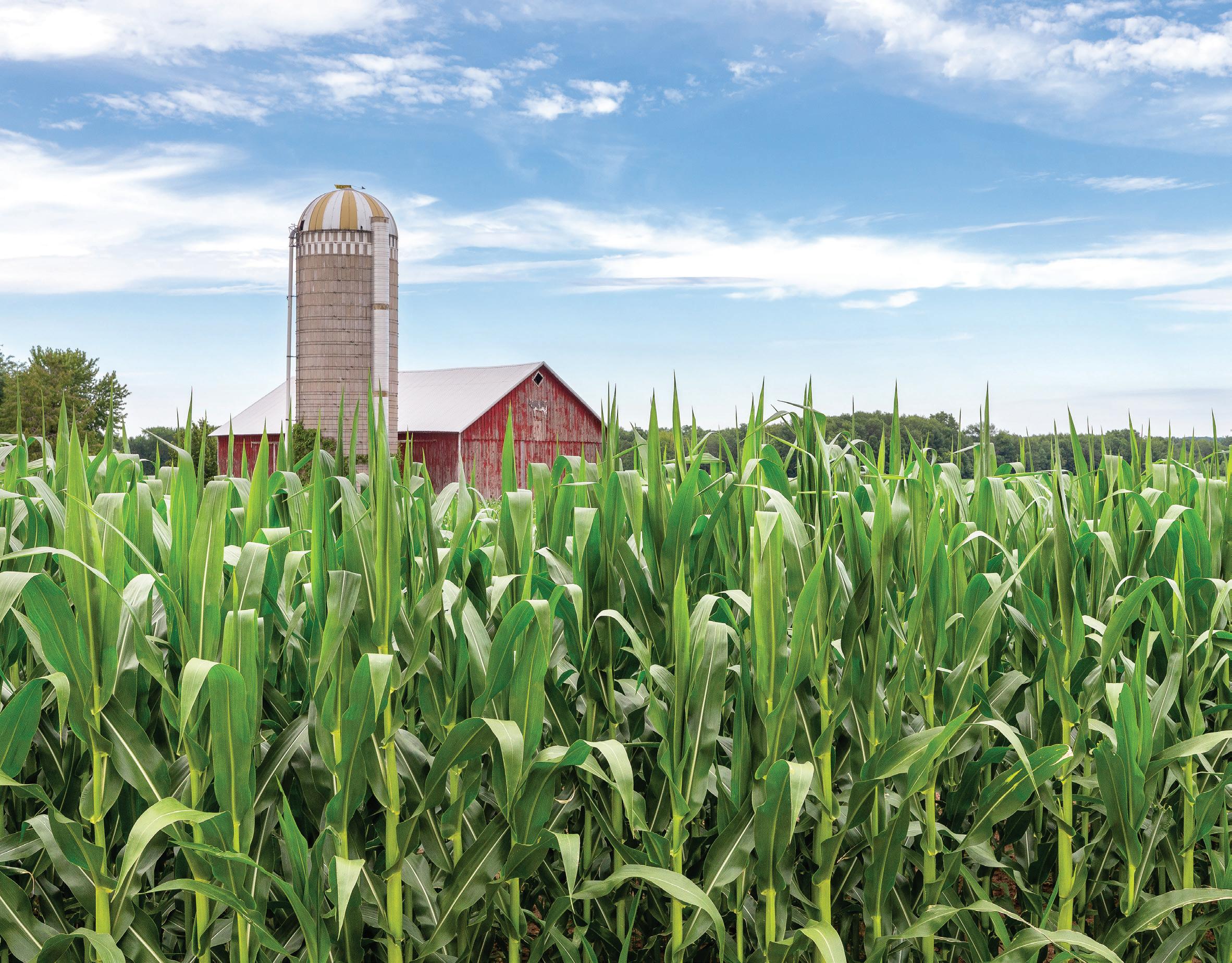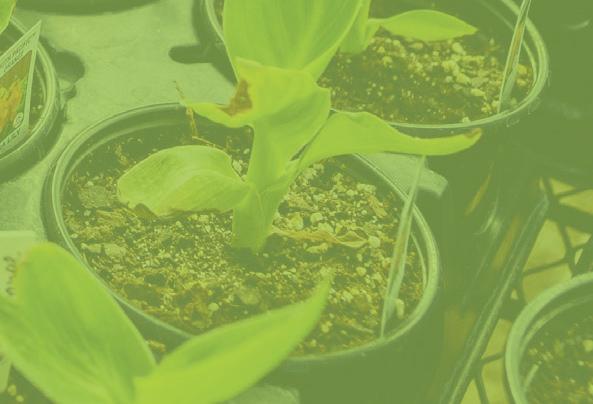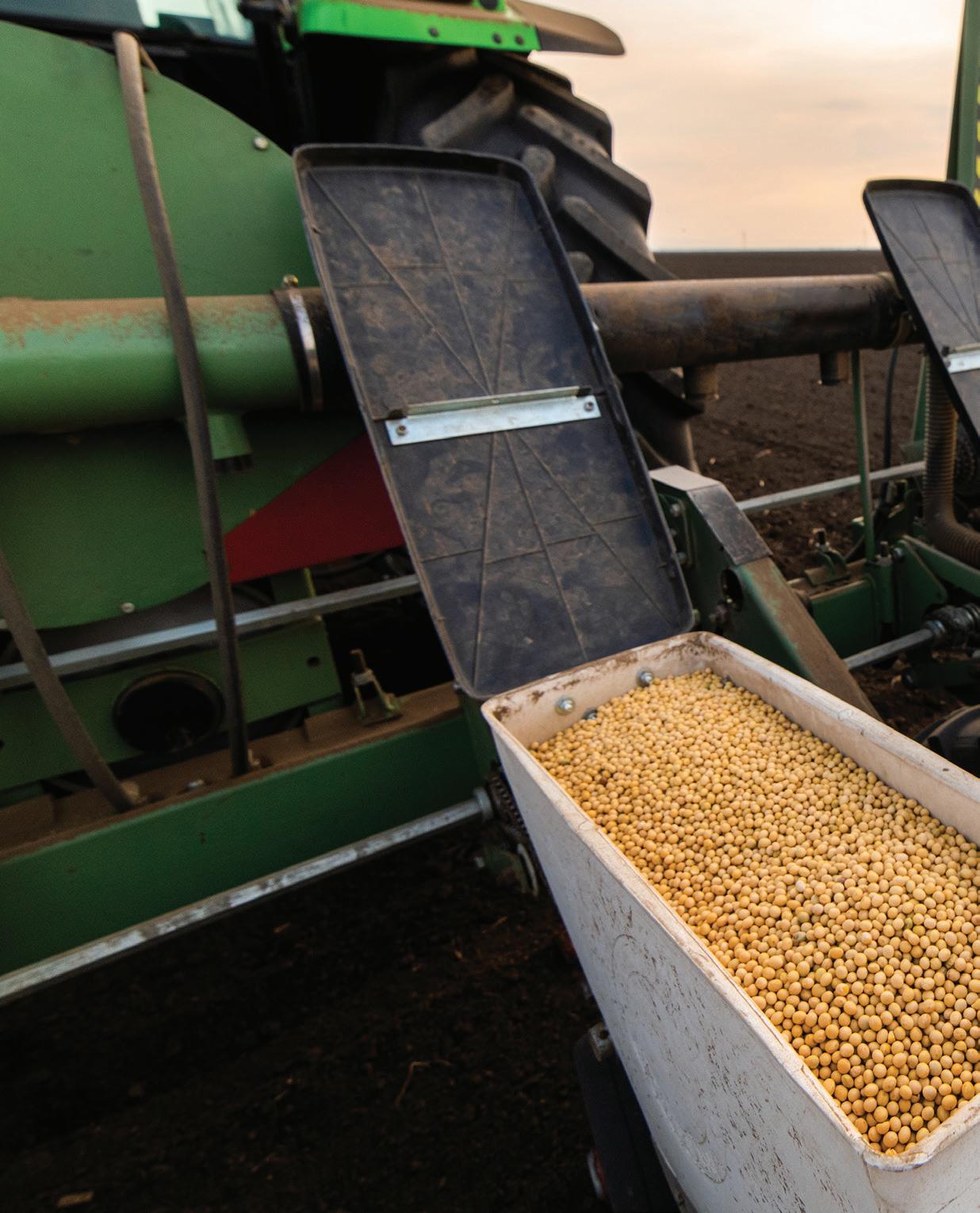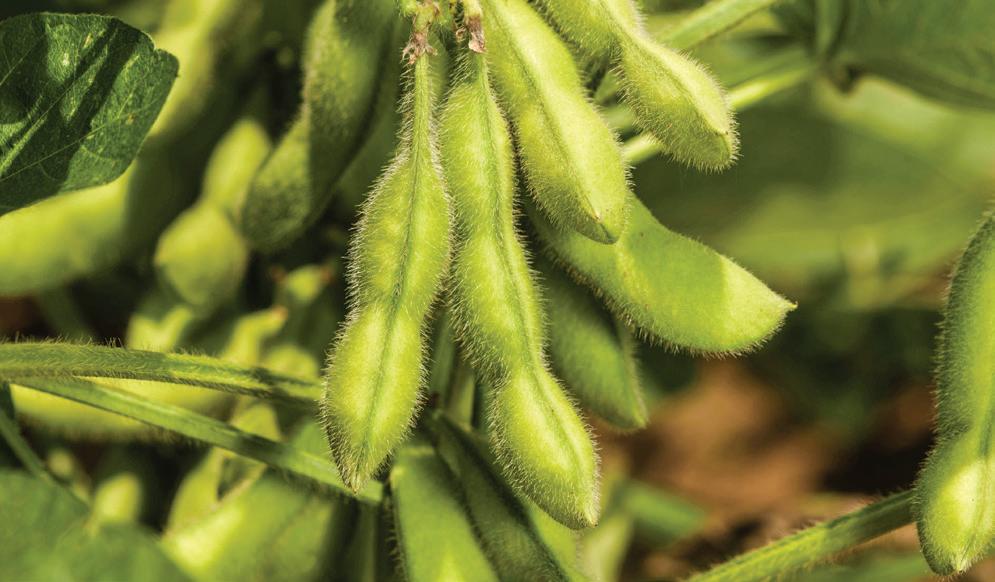
3 minute read
In South America, FARMERS EXPAND WITH DOUBLE, TRIPLE CROPPING
from DC_AgMag_Spring 2023
by Shaw Media
By Martha Blum • AgriNews Publications
South American farmers have the opportunity for double or triple cropping since they can plant crops all year.
“In the current crop season, the total land use is 124 million acres,” said Joana Colussi, University of Illinois postdoctoral research associate. “The total planted area is 189 million acres and those additional acres are from double or triple cropping.”
The three corn crops during the year are planted in different seasons and different regions, said Colussi during a presentation in DeKalb at the 2023 Illinois Farm Economics Summit, hosted by U of I Extension and the farmdoc team from the U of I Department of Agricultural and Consumer Economics.
“The first corn crop is in the south of Brazil and the second corn crop called the safrinha happens in the fall and winter,” she said.
“They harvest soybeans in February and plant corn the same day and the third crop is planted in northeast Brazil and that is less than 2% of the corn production in Brazil.”
Colussi said South America produces more soybeans than the United States and is becoming a more important producer of corn.
“South America produces 7.2 billion bushels of soybeans and that is 54% of the world share,” she said. “The U.S. produces 35% of the world share.”
For corn production, Colussi said South America produces 6.7 billion bushels of corn, which is 15% of the world share compared to the United States which produces 31% of the world share.
For the 2022-2033 crop season, Brazilian soybean acreage is expected to grow 5% to reach 107 million acres, Colussi said.
“Brazil is expected to produce a record 5.6 billion bushels of soybeans, which is an increase of around 20% compared to last season,” she said.
Corn acreage in Brazil is expected to grow 4% in 2022-2023 reaching 55 million acres, Colussi said.
“That’s a new record and it represents an increase of 12% compared to last season and that’s for the first crop,” she said.
“Brazilian corn exports hit a record in 2022 at almost 44 million metric tons and exports to China will shake up Brazil’s corn market in 2023,” she added. “China signed an agreement to import corn in May 2022 and the shipments started in November.”
With this agreement with China, Colussi said Brazil could reach corn exports of almost 50 million tons in 2023.
“That amount is close to the forecast for U.S. corn exports in 2023 of 53 million tons,” she said.
The high domestic demand and the global prices are drivers for expanding planted acres in Brazil, along with the depreciation of the Brazilian currency relative to the U.S. dollar.
“One dollar equals 5.4 Brazilian reals,” Colussi said. “And Brazil is expanding its ethanol corn production – currently, there are 17 ethanol plants in operation.”
In Argentina, 85% of the corn and 90% of the soybeans were planted as of Jan. 5.
“The planting progress is similar to last year. However, around 70% of the soybeans were planted outside of the ideal period when maximum potentials are reached,” Colussi said. “Instead of October to November, many farmers planted in December because of the dry weather.”
The late season corn yields depend on rain coming in the next few weeks.
“The forecasts are not optimistic about rainfall and this is the third consecutive La Niña year where temperatures are below average across the Pacific Ocean,” Colussi said. “La Niña usually creates a hotter and drier summer in Argentina and so far it has been doing so.”
For the past three years, the period from August to December has been the driest in over 30 years, Colussi said.
“The Argentina 2022-2023 wheat harvest was the lowest in seven years – 45% smaller,” she said. “The minimal rainfall levels and late season frosts contributed to the extremely low yields at an average of 30 bushels per acre.”
However, in Brazil, good growing conditions and higher acreage resulted in a record wheat crop.
“Brazil increased the wheat area last year around 12%, especially because of the war in Ukraine,” Colussi said. “While Brazil typically relies on Argentina wheat as a main source of imports for domestic demand, this year may require Brazil to import larger amounts of wheat from suppliers such as Canada and the U.S.”
Because of the weather conditions, the corn acreage in Argentina is expected to decrease 8% in 2022-2023.
“Argentina is projected to produce 1.9 billion bushels of corn, a decrease of 15% from last year,” Colussi said.
Argentina farmers will likely increase soybean acreage 3% from last year.
“The area is expected to reach 41 million acres and produce 1.7 billion bushels of soybeans,” Colussi said. “But Argentina soybeans are still in the early stages of their season and they are behind normal development from La Niña.”
Soybean sales from Argentina spiked in November 2022.
“That was after the government revived a policy that allowed farmers to tap a preferential exchange rate to attract U.S. dollars,” Colussi said.
“Since Argentina’s corn crop is stressed, the U.S. should eventually have a better chance of selling corn before Brazil’s safrinha harvest in July,” she said.





